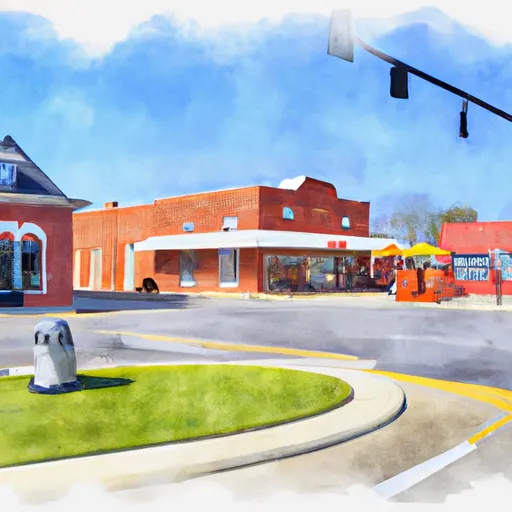-
 Snoflo Premium
Snoflo Premium
Get unlimited access to all our content
With no Ad interruptions! - Start Your Free Trial Login with existing account
Mc-Cordsville
Eden Index
Climate
8.3
•
Recreation
2.8
•
Community
4.5
•
Safeguard
5.4/10

Mc-Cordsville, Indiana is a charming town located in Hancock County, in the central part of the state. The town experiences a humid continental climate, characterized by hot and humid summers, and cold winters. Summers bring average temperatures of around 85°F (29°C), while winters dip to an average low of 20°F (-6°C). Spring and fall seasons are mild and pleasant.
Situated near the Fall Creek, Mc-Cordsville benefits from various hydrology constituents. The creek provides opportunities for boating, fishing, and other water-based activities. The town is also home to several small lakes and ponds, offering additional recreational options such as swimming, kayaking, and picnicking.
Outdoor enthusiasts can explore the McCordsville Parks and Recreation Department, which manages several parks and green spaces within the town. These areas provide opportunities for hiking, walking trails, and sports activities like baseball, soccer, and basketball. Residents and visitors can also enjoy golfing at nearby golf courses or explore the scenic countryside through biking and horseback riding.
Mc-Cordsville, Indiana offers a favorable climate for outdoor recreation and a range of hydrology constituents, making it an ideal destination for nature lovers and those seeking an active lifestyle.
What is the Eden Index?
The Snoflo Eden Index serves as a comprehensive rating system for regions, evaluating their desirability through a holistic assessment of climate health, outdoor recreation opportunities, and natural disaster risk, acknowledging the profound impact of these factors on livability and well-being.
Climate Health Indicator (CHI): 8.3
Mc-Cordsville receives approximately
1109mm of rain per year,
with humidity levels near 82%
and air temperatures averaging around
11°C.
Mc-Cordsville has a plant hardyness factor of
6, meaning
plants and agriculture in this region thrive during a short period during spring and early summer. Most
plants will die off during the colder winter months.
By considering the ideal temperature range, reliable water supplies, clean air, and stable seasonal rain or snowpacks, the Climate Health Indicator (CHI) underscores the significance of a healthy climate as the foundation for quality living.
A healthy climate is paramount for ensuring a high quality of life and livability in a region, fostering both physical well-being and environmental harmony. This can be characterized by ideal temperatures, reliable access to water supplies, clean air, and consistent seasonal rain or snowpacks.
Weather Forecast
Streamflow Conditions
Patoka-White
Area Rivers
Patoka-White
Snowpack Depths
Patoka-White
Reservoir Storage Capacity
Patoka-White
Groundwater Levels
Recreational Opportunity Index (ROI): 2.8
The Recreational Opportunity Index (ROI) recognizes the value of outdoor recreational options, such as parks, hiking trails, camping sites, and fishing spots, while acknowledging that climate plays a pivotal role in ensuring the comfort and consistency of these experiences.
Access to outdoor recreational opportunities, encompassing activities such as parks, hiking, camping, and fishing, is crucial for overall well-being, and the climate plays a pivotal role in enabling and enhancing these experiences, ensuring that individuals can engage in nature-based activities comfortably and consistently.
Camping Areas
| Campground | Campsites | Reservations | Toilets | Showers | Elevation |
|---|---|---|---|---|---|
| South Harrison Co Park | None | 754 ft | |||
| Buffalo Trace Co Park | 64 | 803 ft | |||
| Salt River Rec Area | None | 428 ft | |||
| Barren River Lake State Park | 100 | 637 ft | |||
| Starve Hollow State Rec Area | 200 | 552 ft | |||
| Deam Lake State Rec Area | 185 | 533 ft | |||
| Jackson - Washington State Forest | None | 672 ft | |||
| Clark State Forest | 45 | 851 ft | |||
| Delaney Creek Park | None | 584 ft | |||
| Hardy Lake State Rec Area | 170 | 650 ft |
Nearby Ski Areas
Catastrophe Safeguard Index (CSI):
The Catastrophe Safeguard Index (CSI) recognizes that natural disaster risk, encompassing floods, fires, hurricanes, and tornadoes, can drastically affect safety and the overall appeal of an area.
The level of natural disaster risk in a region significantly affects safety and the overall livability, with climate change amplifying these risks by potentially increasing the frequency and intensity of events like floods, fires, hurricanes, and tornadoes, thereby posing substantial challenges to community resilience and well-being.
Community Resilience Indicator (CRI): 4.5
The Community Resilience Indicator (CRI) recognizes that education, healthcare, and socioeconomics are crucial to the well-being of a region. The CRI acknowledges the profound impact of these elements on residents' overall quality of life. By evaluating educational resources, healthcare accessibility, and economic inclusivity, the index captures the essential aspects that contribute to a thriving community, fostering resident satisfaction, equity, and social cohesion.

